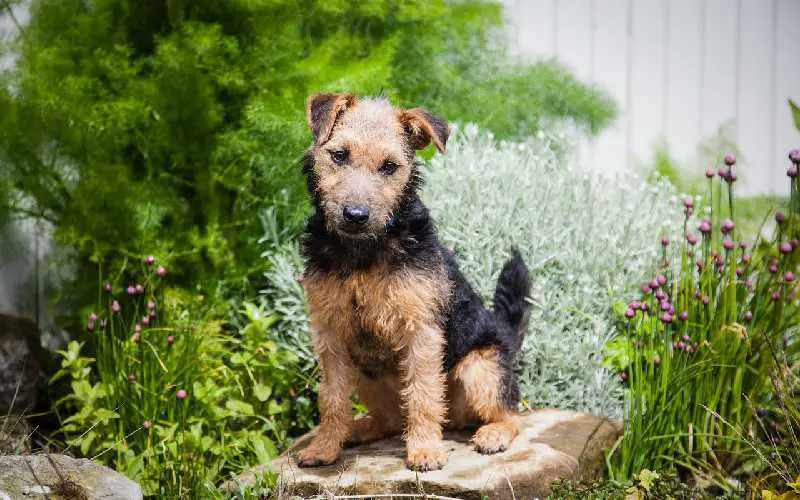Today we’re taking a look at the life of a working terrier. We will be considering the best breeds of working terrier and the characteristics that you should look out for. My last Jack Russell, Milo wasn’t a ‘working dog’ as such, but he certainly kept our yard (and the neighbours yard) free from vermin! he would have done well on a farm!
An Introduction to Working Terriers
Working terriers roles have changed in the UK since the banning of fox hunting. Many were originally bred to hunt and kill foxes which is no longer allowed in England. It was banned by the Hunting Act of 2004.
However, working terriers are still used in the UK to clear farms of vermin such as rats and for ‘bushing’ or clearing the bushes of vermin. They are also sometimes used for tracking due to their strong sense of smell.
If you want to see working terriers in action, simply type into YouTube ‘working terriers hay bales’ and you will be impressed at the speed and agility at which they work! A great example is the one from ‘Severn Valley Ratters – Mayhem in the Bales!’ The dogs certainly do enjoy the work that they do.
***Warning – contains dogs killing vermin and may be unsuitable for some viewers***
Breeds of Working Terrier
It’s important to note here that a good working terrier does not have to be a pedigree. In fact fell terriers and patterdale terriers are simply a mix of good working terriers genes. It is not necessary that they are ‘Pedigree’ as such.
However, some terriers are pedigree and many terrier breeds are shown at Crufts. Examples of ‘pedigree’ working terriers include Parsons Jack Russell, Border terrier and Bedlington Terrier.
Fell Terriers
Fell terriers are a mix of several types of terrier which could include the Patterdale terrier, Lakeland terrier or Scorrier terrier. They are essentially a long legged mongrel type terrier often used on farms and the ‘fells’.
Patterdale Terriers
Patterdale terriers were bred in the Lake District of Cumbria. They were originally bred for hunting vermin such as foxes, rabbits and rats. They also make good guard dogs and are considerably useful farm animals.
Jack Russells
Jack Russells are instantly recognisable due to their tri-colour (white, brown and black) and their mask – like face. They are high energy terriers and excellent ratting dogs. They are also used as guard dogs on farms and large properties as they alert their owners of intruders or visitors instantly.
Border Terrier
Border terriers were originally bred for fox hunting. These small terriers used to drive the foxes out ready for the hounds to chase and kill. They are now used for general clearing farmland of vermin and alerting to intruders.
Bedlington Terrier
The Bedlington Terrier is recognisable from the ‘mound’ or tuft of fur on their head and the ‘pom-pom’ style of fur at the ends of their ears. These terriers were originally bred to clear land of rabbits. They are fast runners and have also historically been used in dog racing.
Working Terrier Characteristics
We all know a classic working terrier to be sturdy and robust. But what are the true working terrier characteristics that people look for when they buy a working dog? The most important working terrier characteristics include speed, prey drive and sturdiness.
Speed
Working terriers are small but they are goddam fast! It might surprise you to hear that many terriers including Jack Russells and Patterdales can run up to 30mph. Considering that rats run at a speed of around 8mph, squirrels at 15mph and rabbits at around 25-30 mph, you can see that it’s important for working terriers to have enough speed to catch their prey.
Prey Drive
Most terriers have an inbuilt prey drive – that is the desire to chase (and catch) small animals such as rodents and vermin. The word ‘terrier’ actually comes from the French ‘terre’ meaning ground. That’s because they would even go underground to chase their prey. Prey drive doesn’t need to be taught to terriers, because it is a natural instinct for them.
Sturdiness
Working terriers such as fell terriers and Patterdales are extremely sturdy. They have a reputation for being ‘hard as nails’ and will relentlessly go after prey even when it fights back. I once had to stop my Jack Russell cross from fighting with a hedgehog in the yard. He was going to continue even with quills stuck in his muzzle! (The hedgehog got away Scot free by the way!)
Strong Jaws
Terriers have strong jaws in order to be able to kill their prey. For example, with rats and mice, they will be killed almost instantly and you will see terriers shake vigorously to make sure that they are dead.
Size
The size of a terrier is particularly important if they working underground or near burrows. Their size needs to be appropriate to the job that they do and relative to their prey.
Should Working Terriers have docked tails?
There is always debate and controversy over docking the tails of working dogs. Of course, if your terrier is a pet then docking is completely unnecessary. However, it is important to consider that sometimes tail docking when done in the right way (less than 5 days old and by a vet who certifies the docking) can be beneficial because it minimises injury to the tail in working dogs and stops them from catching it in bushes.
If you enjoyed this article you might also like to read about Are Patterdale Terriers working dogs or Pets

